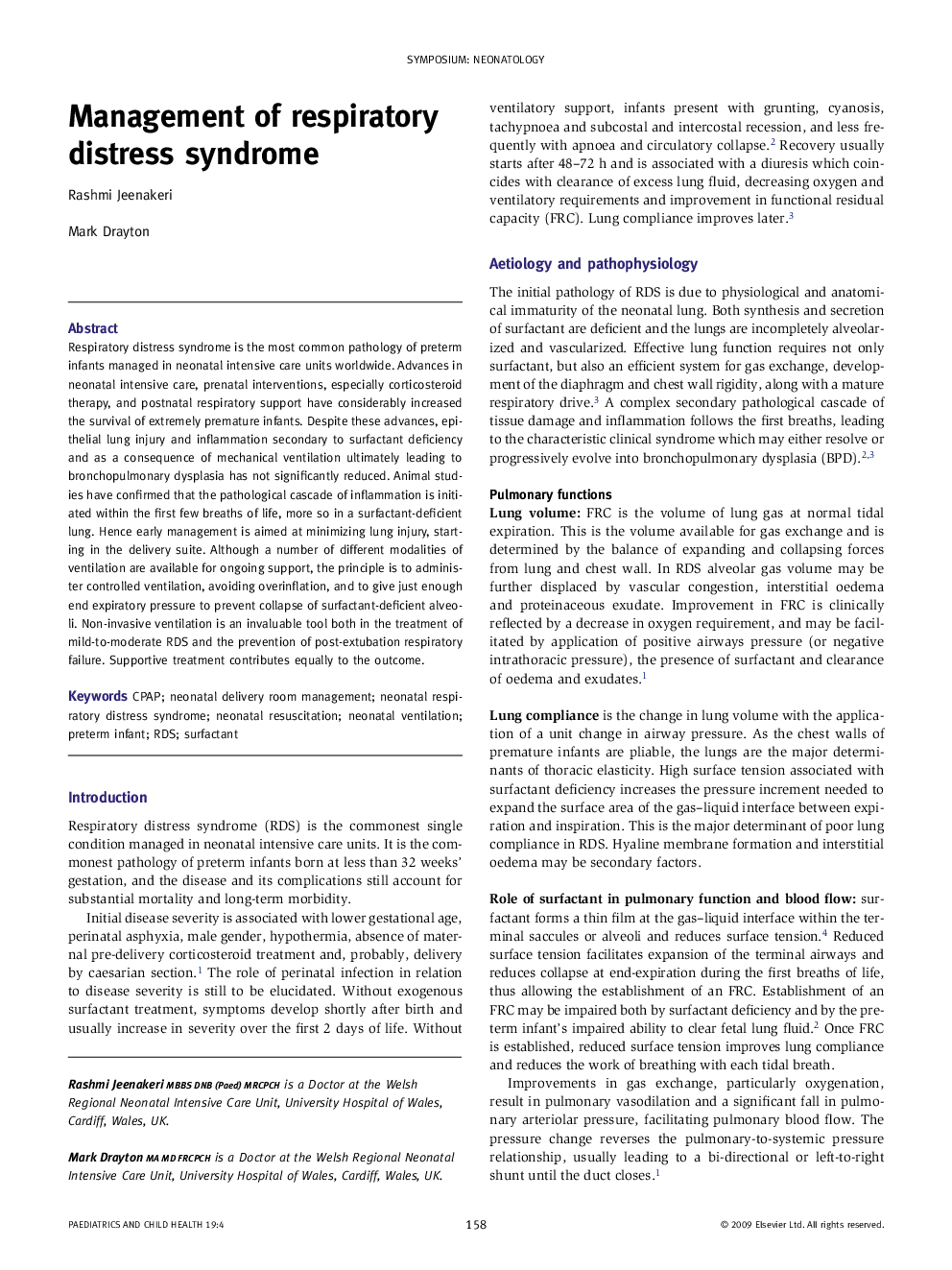| Article ID | Journal | Published Year | Pages | File Type |
|---|---|---|---|---|
| 4173140 | Paediatrics and Child Health | 2009 | 7 Pages |
Respiratory distress syndrome is the most common pathology of preterm infants managed in neonatal intensive care units worldwide. Advances in neonatal intensive care, prenatal interventions, especially corticosteroid therapy, and postnatal respiratory support have considerably increased the survival of extremely premature infants. Despite these advances, epithelial lung injury and inflammation secondary to surfactant deficiency and as a consequence of mechanical ventilation ultimately leading to bronchopulmonary dysplasia has not significantly reduced. Animal studies have confirmed that the pathological cascade of inflammation is initiated within the first few breaths of life, more so in a surfactant-deficient lung. Hence early management is aimed at minimizing lung injury, starting in the delivery suite. Although a number of different modalities of ventilation are available for ongoing support, the principle is to administer controlled ventilation, avoiding overinflation, and to give just enough end expiratory pressure to prevent collapse of surfactant-deficient alveoli. Non-invasive ventilation is an invaluable tool both in the treatment of mild-to-moderate RDS and the prevention of post-extubation respiratory failure. Supportive treatment contributes equally to the outcome.
